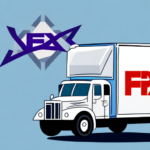What Is a Shipment Exception? Exploring the Different Types and Causes
Shipment exceptions are a prevalent challenge that businesses encounter in their supply chain management. Essentially, a shipment exception occurs when there is an issue with the delivery of goods that deviates from the expected or promised service level. This can lead to significant disruptions in a company's operations, resulting in loss of revenue, increased costs, and customer dissatisfaction.
Understanding the Basics of Shipment Exceptions
Before delving into the various types of shipment exceptions, it's crucial to comprehend what they are and why they occur. Shipment exceptions can emerge at any stage of the supply chain, from the moment a product is shipped to its arrival at the destination. Common reasons for shipment exceptions include:
- Transit delays
- Damaged or lost goods
- Incorrect delivery addresses
- Incomplete or inaccurate documentation
In some instances, shipment exceptions result from a combination of factors that can be challenging to identify and resolve.
For businesses, having a robust plan to handle shipment exceptions is essential. This plan should encompass:
- Clear communication channels with carriers and customers
- Processes for timely identification and resolution of exceptions
- Investment in technology for tracking shipments and providing real-time updates
By being proactive and prepared, businesses can minimize the impact of shipment exceptions on their operations and maintain high levels of customer satisfaction.
Types of Shipment Exceptions
Shipment exceptions can vary widely based on the nature of the cargo, the mode of transportation, and the complexity of the supply chain. Some common types include:
- Missed or Delayed Delivery Deadlines: When shipments do not arrive within the expected timeframe.
- Damage or Breakage of Goods: Occurs during transit due to improper handling or inadequate packaging.
- Theft or Tampering of Cargo: Security breaches that result in loss or damage of goods.
- Incorrect or Incomplete Delivery Paperwork: Issues with shipping labels, invoices, or customs forms.
- Inadequate Packaging or Labeling: Use of non-compliant materials or improper marking of hazardous materials.
One of the most challenging exceptions is when goods are held up at customs due to regulatory issues. This can occur if the cargo contains restricted items or if necessary documentation is missing or incorrect. In such cases, collaborating closely with customs officials is vital to expedite the release of cargo.
Another prevalent type of shipment exception involves carrier operational issues, such as mechanical breakdowns that cause transit delays. This is especially problematic for time-sensitive or perishable goods. Implementing contingency plans, like alternative transportation options or backup suppliers, can help mitigate the impact of such delays.
Common Causes of Shipment Exceptions
Shipment exceptions can arise from a multitude of factors, some of which are beyond the control of the shipper or carrier. Common causes include:
- Poor Weather Conditions: Adverse weather can delay shipments and affect transit times.
- Carrier Capacity Constraints: Limited transportation capacity can lead to delays and exceptions.
- Infrastructure Problems: Issues with transportation infrastructure can disrupt the supply chain.
- Delays in Customs Clearance: Regulatory hurdles can slow down the clearance process.
- Errors in Transportation Planning: Inefficient planning can lead to shipment delays and exceptions.
Additionally, inadequate communication between stakeholders can exacerbate shipment exceptions. Lack of visibility and tracking information, or poor integration of logistics systems, can hinder the timely resolution of issues.
Incorrect or incomplete documentation is another significant cause. This includes missing or inaccurate information on shipping labels, invoices, or customs forms. Improper packaging or labeling, such as using non-compliant materials or failing to properly mark hazardous materials, can also lead to exceptions.
Unexpected events like natural disasters, labor strikes, or political unrest can further disrupt transportation networks, delay customs clearance, or even result in the closure of ports or airports. In these scenarios, shippers and carriers must quickly adapt their logistics plans and find alternative routes or modes of transportation to ensure timely delivery.
Identifying Shipment Exceptions in Your Supply Chain
Effectively managing shipment exceptions begins with their identification. Businesses can monitor for shipment exceptions through various methods:
- Automated Tracking Systems: Utilize technology to monitor shipments in real-time.
- Third-Party Logistics Providers: Engage specialists in exception management.
- Clear Communication Protocols: Establish protocols with carriers and supply chain partners to promptly report and resolve exceptions.
For example, a common shipment exception is a delay in transit caused by weather conditions or traffic congestion. To mitigate such delays, businesses can work with carriers to establish contingency plans and alternative routes. Additionally, leveraging data analytics to identify patterns in delays can help proactively adjust supply chain strategies.
Another type of shipment exception is damage to products during transit, which can result from improper handling, inadequate packaging, or transportation accidents. To prevent product damage:
- Collaborate with carriers to establish proper handling procedures and packaging requirements.
- Implement clear protocols for reporting and resolving damage, including filing claims with carriers or insurance providers.
Impact of Shipment Exceptions on Business Operations
The repercussions of shipment exceptions on a business can be substantial. Beyond the direct costs of managing and resolving exceptions, there are indirect costs, including:
- Negative Customer Feedback: Delays and issues can lead to dissatisfied customers.
- Lost Sales Opportunities: Inability to meet delivery promises can result in lost business.
- Damage to Brand Reputation: Repeated exceptions can tarnish a company's image.
- Disrupted Supply Chain Operations: Exceptions can cause delays in production or distribution, increasing inventory costs.
- Legal Issues and Penalties: Violations of regulations or agreements with customers can result in fines and legal complications.
To mitigate these impacts, businesses should adopt a proactive approach to managing shipment exceptions. This includes implementing effective tracking and communication systems, and collaborating closely with carriers and customers to prevent and swiftly resolve issues.
Strategies for Preventing Shipment Exceptions
While preventing shipment exceptions can be challenging, several strategies can significantly reduce their likelihood:
- Improve Communication and Visibility: Enhance transparency across the supply chain to ensure all stakeholders are informed.
- Conduct Regular Quality Checks: Ensure goods and documentation meet required standards before shipping.
- Invest in Training for Logistics Staff: Well-trained staff can prevent errors that lead to exceptions.
- Utilize Data Analytics: Monitor exceptions proactively by analyzing data for potential issues.
- Ensure Carrier Capacity: Verify that carriers have the necessary resources and capacity to handle shipments effectively.
Additionally, establishing clear and concise shipping policies and procedures is crucial. This includes guidelines for packaging, labeling, and documentation requirements, as well as instructions for handling and resolving exceptions when they arise. Providing employees with a clear understanding of expectations and procedures can reduce the likelihood of errors and exceptions in the shipping process.
Resolving Shipment Exceptions: Best Practices
When shipment exceptions do occur, resolving them efficiently is vital to minimizing their impact on business operations. Best practices for resolving shipment exceptions include:
- Prompt Communication: Inform all affected stakeholders immediately upon identifying an exception.
- Root Cause Analysis: Investigate the underlying reasons for the exception to prevent recurrence.
- Identify Potential Resolutions: Develop solutions tailored to the specific exception.
- Collaborate with Partners and Carriers: Work together to implement corrective actions.
- Maintain Accurate Documentation: Keep detailed records to facilitate resolution and support claims if necessary.
Establishing clear protocols and procedures for handling shipment exceptions is also essential. This includes assigning specific roles and responsibilities, setting timelines for resolution, and defining escalation paths for complex issues. A well-defined process ensures that shipment exceptions are addressed consistently and promptly.
Continuous monitoring and analysis of shipment exception data can help identify trends and areas for improvement. Tracking the frequency and types of exceptions, analyzing root causes, and implementing corrective actions are all part of a proactive exception management strategy. This approach not only minimizes disruptions but also enhances overall operational efficiency.
The Role of Technology in Managing Shipment Exceptions
Technological advancements have significantly enhanced businesses’ ability to manage and prevent shipment exceptions. Key technologies include:
- Automation of Supply Chain Processes: Streamlines operations, reducing the potential for human error.
- Real-Time Visibility and Tracking Tools: Provide up-to-the-minute information on shipment status.
- Analytics Platforms: Analyze data to identify and address potential exceptions proactively.
- Blockchain Technology: Enhances security and transparency, reducing the potential for shipment exceptions.
- Artificial Intelligence (AI): AI-powered systems can analyze large datasets to identify patterns indicative of potential exceptions, enabling predictive measures and recommendations for action.
For instance, AI can predict the likelihood of exceptions and suggest the best course of action, allowing businesses to take preventative measures before issues arise. Integrating AI and other advanced technologies into shipment exception management processes can lead to smoother and more efficient supply chain operations.
Pros and Cons of Outsourcing Shipment Exception Management
Outsourcing shipment exception management to specialized third-party logistics providers offers several benefits:
- Access to Expertise: Leverage specialized knowledge and resources that may not be available in-house.
- Risk Mitigation: Reduce the risk of errors and delays by relying on experienced providers.
- Scalability: Easily scale operations based on business needs without significant investment.
However, outsourcing also has its drawbacks:
- Costs: Outsourcing can be expensive, especially for small to medium-sized businesses.
- Loss of Control: Companies may have less oversight over their supply chain operations when managed externally.
- Dependency: Relying heavily on third-party providers can create vulnerabilities if the provider faces issues.
Businesses must weigh these pros and cons carefully to determine whether outsourcing shipment exception management aligns with their operational goals and resources.
Case Studies: Handling Different Types of Shipment Exceptions
Examining real-world examples can provide valuable insights into effective shipment exception management:
- UPS: Developed a cloud-based visibility platform that proactively identifies and addresses potential exceptions, enhancing their ability to manage disruptions effectively.
- Coca-Cola: Implemented a Quality Control Center that conducts regular checks of products and packaging, preventing quality-related exceptions and ensuring consistent product delivery.
These case studies underscore the importance of identifying specific causes of shipment exceptions and implementing targeted solutions to address them. By adopting similar strategies, other businesses can enhance their exception management processes and overall supply chain resilience.
Future Trends in Supply Chain Management and Shipment Exception Handling
The management of shipment exceptions will continue to be a critical aspect of supply chain management in the future. Emerging trends include:
- Advanced Data Analytics: Enhanced data analytics capabilities will provide deeper insights into shipment patterns and exception trends, enabling more effective prevention and resolution strategies.
- Blockchain Integration: Increased use of blockchain technology will improve transparency and security, further reducing the likelihood of shipment exceptions.
- Sustainable Transportation Methods: Development of more efficient and environmentally-friendly transportation options will help minimize disruptions and exceptions related to transportation.
- Internet of Things (IoT): IoT devices will offer greater real-time monitoring and control over shipments, allowing for immediate responses to potential exceptions.
As these technologies and methods evolve, businesses will have more tools at their disposal to manage and prevent shipment exceptions effectively. Staying abreast of these trends and integrating relevant advancements can provide a competitive edge in supply chain management.
In conclusion, businesses that understand the different types and causes of shipment exceptions and implement effective strategies for managing and preventing them will be best positioned to succeed in today's competitive market. By investing in technology, enhancing communication and collaboration with logistics partners, and having a clear understanding of the risks associated with shipment exceptions, companies can minimize disruptions and ensure that goods are delivered to customers in a timely and efficient manner.






















